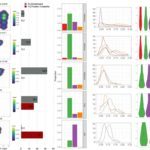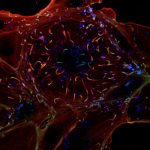Présentation
This project is a part of the international Infect-Era program, AMOEBAC: Entamoeba histolytica-bacterium interaction and the role of this interaction in intestinal pathogenesis (http://www.infect-era.eu/2nd-call-2014)
The aim of this investigation is to understand the induced changes in physiology, metabolism, and gene expression of Entamoeba histolytica following its interaction with enteric bacteria and during intestine invasion. We take advantage of human tissue-like models to study amoebic pathogenesis combining imaging, image analysis and Omics approaches. The three-dimensional tissue model consists of a human cells system composed of fibrillar collagen I matrix, intestinal cells (epithelial, fibroblasts and goblets) and macrophages. Using this model, we determine the rate of amebic invasiveness using two-photon laser scanning fluorescence microscopy, assess the immune response using ELISA, investigate human gene expression by RNA sequencing and discover the secretome using proteomics and HPLC-MS/MS.















